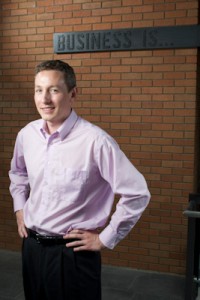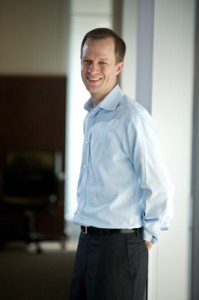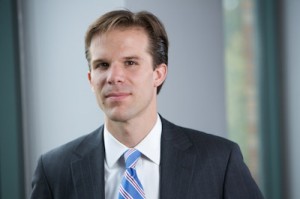Corporations stockpiling cash, some of it in risky investments
The largest American corporations hold combined cash reserves in excess of $1.5 trillion, an account that has more than doubled over the past decade.
But this is not simply an industrial-sized rainy day fund. According to researchers at the University of Washington Foster School of Business, firms are investing a good deal of this “cash” aggressively in risky financial securities.
A new study by Ran Duchin, Thomas Gilbert, Jarrad Harford and Christopher Hrdlicka introduces a new and more comprehensive method of accounting for corporate cash. This new measure, applied to financial disclosures issued by the S&P 500 firms from 2009 to 2012, reveals 25 percent more non-operating financial assets on their books than had previously been captured.
And this surplus of cash is not just glacially accruing interest in the safe harbors of bank accounts, money market funds and treasury bonds. A significant portion of these financial assets are invested in high-risk assets such as corporate debt, equity and asset-backed securities.
“These investments run contrary to the common view that industrial firms mainly hold cash and cash equivalents for precautionary reasons,” says Hrdlicka, an assistant professor of finance at Foster. “And this activity represents an unregulated asset management industry of more than $1.5 trillion, questioning the traditional boundaries of non-financial firms.”
Cash not cash
The conventional method of calculating cash reserves is simply to add up a company’s disclosures of cash, cash equivalents and short-term marketable securities. Each ensures safety and liquidity for firms that are keeping money on hand as a hedge against future uncertainty.
But does this method capture all of the cash on the books?
New accounting regulations, enacted after the financial crisis of 2007-08, require firms to disclose more detailed information on the nature of their short-term and long-term investments.
In closely examining this new documentation, the Foster researchers discovered a trove of additional funds listed in long-term investments that shared the characteristics of corporate cash, broadly defined: financial assets that are not directly addressing operations expenses.
Across the 500 largest industrial companies, they uncovered 25 percent more corporate cash—hundreds of billions of dollars invested in a wide array of instruments on the market.
Shadow hedge fund industry
To understand what the S&P 500 is doing with these excess dollars, Duchin, Gilbert, Harford and Hrdlicka pored through the footnotes of the financial reports and found that nearly 40 percent of the non-operating financial assets were invested in risky securities such as corporate equity, corporate debt, and mortgage-backed securities.
In the context of the S&P 500, this amounts to $600 billion during the period of the study—and more than $700 billion today—that is actively invested in risky securities by managers of non-financial firms.
The volume in play is creating what the authors describe as a “shadow” asset management industry. “Some of these companies are operating like a non-financial hedge fund,” Hrdlicka says. “They have become huge and largely unregulated players on the market.”
Financial firms are heavily regulated and face strict disclosure requirements designed to maximize transparency. Think of your 401(k) statement with its extensive field of line items disclosing the activity and performance of every single security in which the fund invests. This is to ensure that the fund managers are acting in your best interests.
Industrial corporations, on the other hand, are required to disclose only the broad asset classes of their non-operating investments. There is no mandate to report on particular securities they are invested in, nor how those investments are performing.
So how they are managing more than $1.5 trillion on behalf of their shareholders is largely unknown.
“Shareholders can neither assess the strategy and performance of this growing shadow asset management industry, nor adjust the rest of their portfolio appropriately,” Hrdlicka adds.
A growing issue
Unreported and unregulated investing is not the only concern that shareholders should have over excessive corporate cash.
Hrdlicka notes that past studies indicate too much cash can signal a lack of innovation, a paucity of promising projects in the pipeline. Moreover, his current study suggests that the risky investment of excess cash is not necessarily good for the bottom line, either. Specifically, the value of a marginal corporate dollar invested in risky securities is 13 to 22 percent lower than if it were invested in safe securities.
Of course, some companies are stashing more cash than others. At the top of the heap are Apple ($246 billion in cash), Microsoft ($103 billion) and Google ($73 billion).
According to the study, those firms that are flush with cash are the most likely to invest in risky assets while more cash-strapped firms still tend to invest conservatively.
But, however you measure it, corporate cash is growing.
“The more cash builds up, the more it is invested in risky ways,” Hrdlicka says. “And it’s not clear why this is happening.”
“Precautionary Savings with Risky Assets: When Cash is Not Cash” is forthcoming in the Journal of Finance. Its authors are Ran Duchin, a professor of finance and the William A. Fowler Professor; Thomas Gilbert, an assistant professor of finance; Jarrad Harford, a professor of finance and the Paul Pigott-PACCAR Professor in Business Administration; and Christopher Hrdlicka, an assistant professor of finance. All are at the UW Foster School of Business.




